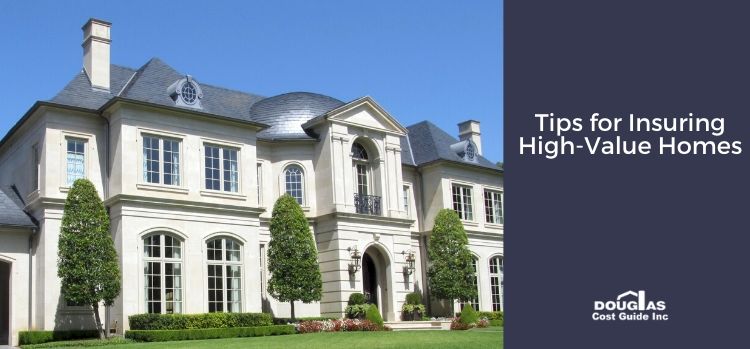What constitutes a high-value home and how do you insure it effectively? These two questions can plague insurance agents and brokers when it comes to high-value home insurance. High-value homes demand specialized coverage and attention to detail. In this blog, we’ll share some tips and key factors to consider to ensure your high-net-worth clients receive the comprehensive protection they deserve.
What is a High-Value Home?
Each insurance company defines high-value homes a little differently; some begin to consider homes high-value if its estimated Replacement Cost New is above $750,000 while others classify homes with an Estimated Replacement Cost of $1 million and above as high-value. It’s best to speak with your underwriter to determine what your company’s rules are before you begin the process of insuring a potential high-value home.
How to Determine if a Home is High-Value
There are many factors to consider when determining if a home is a high-value home or if it should be rated on a standard policy. Below are some of the key questions to consider:
- Was the home architecturally designed?
- Were rare or imported materials used in the construction of the home?
- Was there specialty or custom construction?
- Are there luxury products/finishes?
- Are there any ‘green’ or ‘high-tech’ features?
- Does the home have specialty feature rooms (such as spas, meditation spaces, theatres, bowling alleys or indoor swimming pools)?
When in doubt, completing a walk-through of the home, if possible, is always advised. Completing a walk-through can shed light on the home, and the type of policy required to insure it effectively.
Items to Consider When Insuring High-Value Residences
Of course, the challenge with all insurance agents and brokers will be to insure a home for the best possible premium with the best possible coverage. Because high-value home policies come at a higher premium, it can be tempting to insure a high-value home on a standard home policy, given that the reconstruction cost of the home could be very similar. However, this would be a disservice to the client, as a standard policy would not include coverages specific to high-value homes.
The policy limitations and endorsement options available for a standard homeowner’s policy would provide insufficient coverage for a high-value home in the event of a loss. Policy limitations on jewelry, collections, additional living expenses etc. all need to be increased for high-value homes.
Rating a home as high-value opens up a host of different coverage options that a standard policy simply does not provide. In and out servant’s coverage, in-home business coverage, landscaping coverage and significantly increased limits for jewelry, collections, furs and artwork are all available for high-value homes.
Claims Service Considerations
As an insurance agent or broker, you’ll also need to consider what type of claims service would be required in the event of a loss as well. High-value homes require specialty care in claims service. In the event of a loss, there is no standard way of replacing a one-of-a-kind light fixture or importing a new slab of Italian marble if needed. Claims service for high-value homes is customized to meet the needs of the client and the home.
Some high-value home policies can even offer full cash payouts without depreciation; clearly, this is not an offering available on standard home policies and may be an option your client would like to explore.
Consult the Douglas Residential Cost Guide to Simplify the Process of Determining the Replacement Cost for High-Value Homes
When in doubt, Douglas Residential Cost Guide can help determine replacement cost for high-value homes. Subscribe to the Douglas Residential Cost Guide today to help you protect your clients and their high-value homes.

